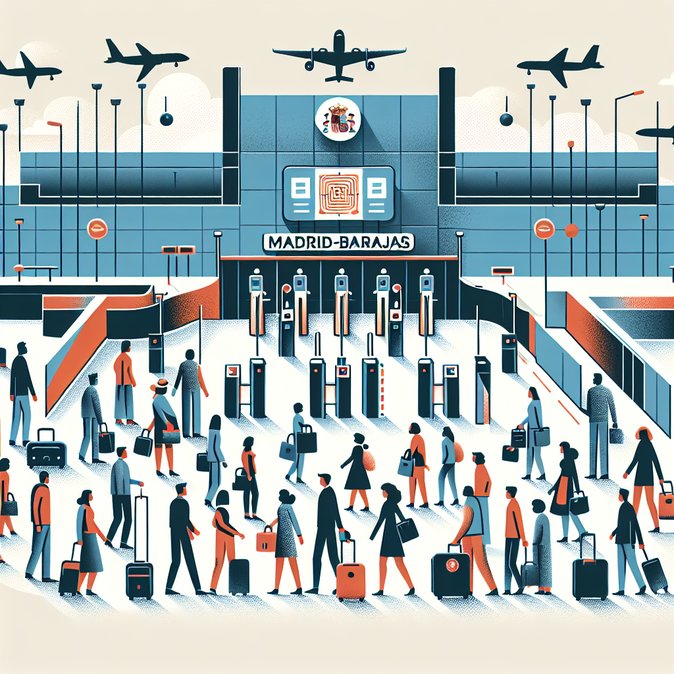
Spain took a decisive step into the era of fully-digital Schengen borders on 10 November 2025, when the Ministry of the Interior activated the European Union’s new Entry/Exit System (EES) at Adolfo Suárez Madrid-Barajas Airport. Between 06:00 and 10:00, 1,819 third-country nationals arriving from Australia, Canada, China, Argentina, Morocco and the United Kingdom completed passport formalities using the biometric kiosks instead of manual stamping.
The EES captures the traveller’s facial image and four fingerprints, links them to the passport chip and records the exact time and place of entry into—or exit from—the Schengen Area. The information is stored for three years and automatically cross-checked on future trips, replacing the manual stamps that currently make it difficult for border guards to calculate short-stay limits.
![Spain Launches EU Entry/Exit System Pilot at Madrid-Barajas]()
Spanish National Police officers monitored the first shift of passengers, reporting average processing times below 45 seconds once enrolment was complete. Speaking on site, Inspector Juan Manuel Valle of the Central Border Unit said the project will “strengthen the fight against irregular migration and organised crime while giving legitimate travellers a faster, self-service experience.”
Barajas is the first Spanish airport to go live, but the Interior Ministry has earmarked €83 million to roll the system out to all external Schengen border posts—including Barcelona, Málaga, Palma de Mallorca and the land frontiers in Ceuta and Melilla—by 10 April 2026, the EU’s deadline for full implementation. Until then, officers will operate “hybrid” lines where passports may still be stamped in parallel with biometric capture to ease congestion.
For companies moving talent in and out of Spain, the change requires little preparation beyond informing non-EU assignees that they will be photographed and fingerprinted on their next entry. The greater benefit is strategic: once the EES is established, overstays will be automatically flagged, making it easier for employers to monitor travel days and remain compliant with 90-in-180 rules when sending staff on short assignments across Europe.
The EES captures the traveller’s facial image and four fingerprints, links them to the passport chip and records the exact time and place of entry into—or exit from—the Schengen Area. The information is stored for three years and automatically cross-checked on future trips, replacing the manual stamps that currently make it difficult for border guards to calculate short-stay limits.

Spanish National Police officers monitored the first shift of passengers, reporting average processing times below 45 seconds once enrolment was complete. Speaking on site, Inspector Juan Manuel Valle of the Central Border Unit said the project will “strengthen the fight against irregular migration and organised crime while giving legitimate travellers a faster, self-service experience.”
Barajas is the first Spanish airport to go live, but the Interior Ministry has earmarked €83 million to roll the system out to all external Schengen border posts—including Barcelona, Málaga, Palma de Mallorca and the land frontiers in Ceuta and Melilla—by 10 April 2026, the EU’s deadline for full implementation. Until then, officers will operate “hybrid” lines where passports may still be stamped in parallel with biometric capture to ease congestion.
For companies moving talent in and out of Spain, the change requires little preparation beyond informing non-EU assignees that they will be photographed and fingerprinted on their next entry. The greater benefit is strategic: once the EES is established, overstays will be automatically flagged, making it easier for employers to monitor travel days and remain compliant with 90-in-180 rules when sending staff on short assignments across Europe.







